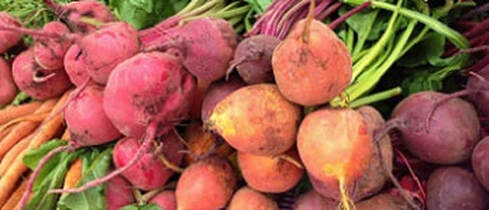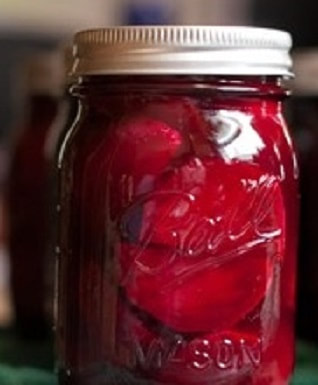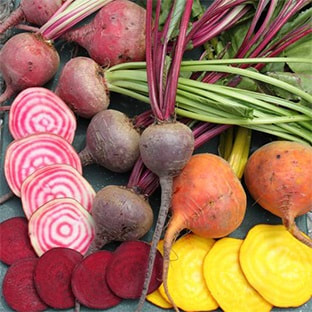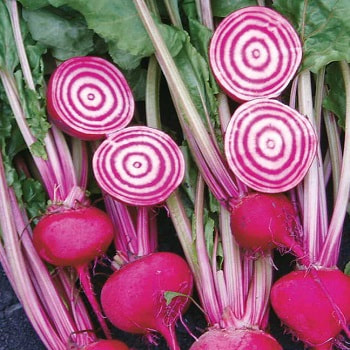|
Well it ought. The beet has lived many lives before its most recent re-discovery as a toothsome, colorful addition to the plate. Some claim that they were grown in Nebuchadnezzar’s Hanging Gardens. What evidence anyone could have of this is a mystery, as is the actual location of those fabled gardens. Isn’t it lovely to have a few things yet unexplained? Trendy A-List Romans served baby beets, or blood turnips, as the very newest in food vogue. Despite these brief periods of popularity, beets and their root brethren were generally considered peasant food. One particularly large, coarse variety, the mangel-wurzel was used solely as cattle fodder. Then again humans once believed that the earth was flat and that the sun revolved around the earth. Fortunately, questing taste buds have long since put the beet back on our tables. Beets have long been used as dyes: first for cloth, much later for the fanciful and sometimes intricate coloring Easter eggs. There are tales of beet wine, but apparently grapes won that game. The rich color of beets is still used to intensify the color of ice creams, candies, jams, jellies, tomato sauces and even breakfast cereals. Native to the Mediterranean Basin, beets were initially cultivated for only their leaves, which through development became Swiss Chard. Over the course of time, beets were used to counteract garlic breath; employed as a laxative; and used to treat digestive and blood disorders. As of today’s intelligence, the beet contains no fat, is an acknowledged energy booster, improves circulation, reduces high blood pressure and hypertension, and is a good source of vitamins A and C. The beet can be eaten raw, roasted, boiled, steamed, sautéed, grilled, braised and pickled. It is equally open to many flavor combinations including nuts, cheeses, garlic, chives, shallots, basil, ginger, oranges, lemons, Moroccan and Asian spice combinations, farro, risotto, pasta, yogurts and sour cream. Our market offers golden beets, the Italian Chiogga beets with their pretty concentric circles, baby beets, orange beets and the traditional deep garnet beets. There are dozens of beet recipes on our website, including Mixed Beets with Chevre, Pistachios and Thai Basil, Roasted Beet Hummus, Golden Beet Flan, Pickled Beets (which are a great addition to a hamburger), Cream of Beet Spread (a terrific alternative for sandwiches and wraps) and Nana’s Cold Borscht Soup. For today Kay Carroll has shared with us her easy way to roast beets without turning the oven on: Slow Cooker Roasted Beets in Foil.
0 Comments
Leave a Reply. |




